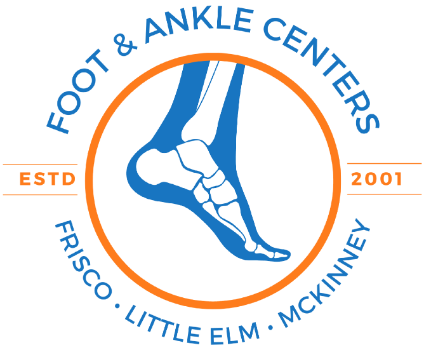Advanced Lapiplasty Bunion Surgery | Foot & Ankle Centers
Aug 14, 2025 | By: Foot & Ankle Centers of Frisco, Little Elm, McKinney
Did you know that bunions affect approximately 23% of adults aged 18-65? These painful bumps can significantly impact quality of life, making everyday activities difficult. In this comprehensive guide, we’ll explore bunion formation, the benefits of the Lapiplasty procedure, recovery expectations, and more.
Understanding Bunions
Bunions, or hallux valgus, are bony protrusions that form at the base of the big toe. They develop when the big toe deviates toward the second toe, leading to an abnormal bone growth. Bunions can result from genetic factors, foot structure, or various conditions, and they often cause pain, swelling, and mobility issues. While they may start as a mild annoyance, bunions can become a source of severe pain if left untreated.
Symptoms of Bunions
1. Pain: A constant ache or sharp pain can occur, especially when wearing shoes.
2. Swelling: The area around the bunion may become swollen and inflamed.
3. Restricted Movement: Limited ability to move the big toe can arise due to pain and stiffness.
4. Changes in Foot Appearance: Visible bump at the base of the big toe and misalignment of the toes.
Traditional Treatments for Bunions
Many individuals opt for traditional remedies when seeking relief from bunions. Treatment suggestions from Foot & Ankle Centers includes:
- Footwear Changes: Wearing wider shoes to accommodate the bunion, avoiding high heels.
- Orthotics: Custom insoles can help distribute weight evenly and reduce pain.
- Pain Relief Medications: Over-the-counter medications like ibuprofen can alleviate discomfort.
- Ice Therapy: Applying ice packs to the bunion can reduce swelling.
However, these methods only address symptoms and do not fix the underlying problem, which is where Lapiplasty comes into play.
What Is Lapiplasty?
Lapiplasty (or 3D bunion correction) is a groundbreaking surgical procedure designed to treat bunions not just superficially, but at the root of the problem. Traditional surgeries were often limited to removing the bump, which did not resolve the misalignment of the joint. Lapiplasty, however, aims to correct the structural issue of the foot while providing lasting relief.
How Does Lapiplasty Work?
Lapiplasty utilizes advanced techniques and technology to realign the bones affected by the bunion. Instead of simply removing excess tissue or bone, this innovative procedure includes:
- 3D Realignment: The method addresses the entire misalignment of the joint in three dimensions.
- Secure Fixation: Specialized titanium plates securely hold the bones in the correct position, ensuring stability during the healing process.
- Minimal Disruption: Unlike traditional bunion surgeries, Lapiplasty minimizes disruption to surrounding tissues, reducing recovery time.
The Benefits of Lapiplasty
Lapiplasty offers numerous perks that make it an appealing option for those with bunion pain:
- Long-term Correction: Addresses the root cause of the bunion, offering lasting relief.
- Faster Recovery: Many patients report quicker recovery times compared to traditional surgery – with many returning to normal activities within weeks.
- Less Pain: Reduces post-operative pain due to less disruption of surrounding areas.
- Minimal Scarring: The incision made during the procedure is smaller than traditional bunion surgeries, resulting in less scarring.
Who Is a Candidate for Lapiplasty?
If bunions are causing significant pain that impacts daily routines and other conservative treatments have failed, you might be a candidate for Lapiplasty. Ideal candidates typically experience:
- Persistent pain despite using orthotics and appropriate footwear.
- Difficulty in physical activities due to bunion pain.
- A visible bony protrusion at the base of the big toe.
Preparing for Lapiplasty Surgery
Before undergoing Lapiplasty, a thorough consultation is essential. During this assessment, a foot specialist at Foot & Ankle Centers will:
- Conduct a comprehensive medical history and physical examination.
- Obtain imaging of your foot through X-rays or MRI to determine the severity of the bunion.
- Discuss surgery goals, potential risks, and the expected recovery process.
What to Expect During the Procedure
Lapiplasty surgery is typically performed on an outpatient basis, meaning you can go home the same day. Highlights of the procedure include:
1. Anesthesia: You will receive anesthesia, ensuring you remain comfortable throughout the surgery.
2. Surgical Procedure: The surgeon will correct the bunion alignment and secure the bones using titanium plates.
3. Recovery and Monitoring: After the surgery, the medical team will monitor your condition before a safe discharge.
Post-Surgery Recovery Tips
Immediately following surgery, follow these helpful recovery tips:
- Rest and Elevation: Keep the foot elevated to minimize swelling.
- Ice Therapy: Apply ice packs to reduce inflammation.
- Follow-Up Appointments: Attend all scheduled post-operative visits to monitor healing.
- Gradual Rehabilitation: Once cleared by your doctor, participate in rehabilitation exercises to regain strength and mobility.
Lifestyle Adjustments
Incorporating practical changes in your daily life can support recovery and prevent future complications:
- Footwear Choices: Invest in supportive, well-fitted shoes that accommodate any remaining foot changes.
- Manage Foot Hygiene: Maintain proper foot hygiene and avoid activities that may aggravate the bunion.
- Stretching Exercises: Regularly perform foot and toe exercises to maintain flexibility and strength in the foot.
Final Thoughts
If bunion pain is holding you back, Lapiplasty® offers fast, effective relief using advanced technology and expert care. With three locations in Frisco, Little Elm, and McKinney, Dr. Knapp, Dr. Tavakoli, and Dr. Treleven bring extensive experience—having performed over 650 Lapiplasty procedures. Foot & Ankle Centers is proud to be one of only 10 Elite Lapiplasty centers in the U.S., ensuring top-quality care and the best outcomes.


Leave a comment
0 Comments